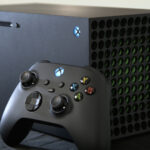First, the bad news, in case you haven’t been following it: The Wii U’s first year-plus on the market was pretty lousy, selling fewer than three million units worldwide between April 2013 and March 2014. Life to date, the latest Nintendo console’s sales are greater than the Xbox One’s but less than the PlayStation 4’s, according to Nintendo of America president Reggie Fils-Aime — but those consoles are a full year younger, and at $300, the Wii U is $100 cheaper.
Now, the good news: Slowly but surely, Nintendo seems to be figuring out how to overcome the Wii U’s biggest drawback, the murky value of the GamePad, its mandatory tablet-controller hybrid. The GamePad is not sold separately, but reportedly costs $140 to replace, and critics have likened it to the Xbox One’s now-optional Kinect, as an accessory that increased the price of the console without greatly increasing gameplay quality.
I’m not a reviewer, and am not going to try to answer the game quality question in this space. But at a hands-on demo session of upcoming games with other members of the press yesterday, a clear theme emerged: The next year of Wii U titles will use the GamePad more aggressively, in many different ways.
A few examples:
Nintendo game designer Shigeru Miyamoto plays Project Giant Robot at E3 2014.
Nintendo
Nintendo game designer Shigeru Miyamoto plays Project Giant Robot at E3 2014.
In Project Giant Robot, a sumo-wrestling game starring giant robots, the GamePad is used to design your robot and then becomes the robot. Tilting it affects the wrestler’s balance, and looking at the controller’s screen rather than the TV’s is the only way to get a first-person view of what the robot sees.
Another robot-oriented game, Project Guard, turns the GamePad into a hub for controlling 12 security cameras around a fortress as evil robots surround it. Tapping on a camera lets players move it around and fire lasers at whatever it sees.
In a twist on the GamePad’s “Off-TV Play,” a co-operative multiplayer mode in the action game Hyrule Warriors lets two people play at the same time without splitting the screen: One player looks at the TV while the other looks at the GamePad.
Kirby and the Rainbow Curse

Nintendo
Kirby and the Rainbow Curse
Kirby and the Rainbow Curse, a platformer game, makes the GamePad’s bundled stylus into a paintbrush. Players use it to paint platforms for Kirby to travel on, and tapping on the deceptively cute pink hero makes him attack enemies and clear obstacles in his way.
Both Project Giant Robot and Project Guard were created by longtime Nintendo designer Shigeru Miyamoto, the creator of Mario, with the explicit goal in mind of finding new ways to use the GamePad. Although not in a final polished stage yet, both are scheduled for release in 2015. Kirby is also coming in 2015, while Hyrule Warriors is scheduled to come out in late September of this year.
Whether Nintendo will be able to convince people to play these games is an open question. One potential roadblock: The big tentpole games that are likely to move the most Wii Us this year, Mario Kart 8 (already out) and Super Smash Bros. (slated for a holiday release), aren’t as GamePad-dependent.
Mario Kart mainly uses the second screen to display a giant touchscreen horn, with the ability to turn the GamePad to turn available but turned off by default. Super Smash Bros., meanwhile, will use the GamePad to read data off Nintendo’s Amiibo interactive toys, although it’s not yet clear if or how that’s preferable to the separate toy-scanning accessories favored by Skylanders and Disney Infinity.
If these new experiments pay off, though, they will validate Nintendo’s insistence on only making games for its own hardware, and its hipstery tendency to do things differently from the competition, even when talking about hypothetical products. For anyone who thinks the company ought to make games for smartphones or tablets, this is as close as you’re going to get for now.
source: Eric Johnson/Recode
Discover more from TechBooky
Subscribe to get the latest posts sent to your email.












